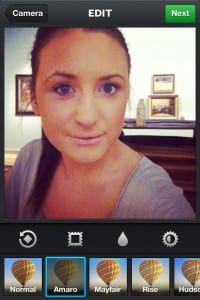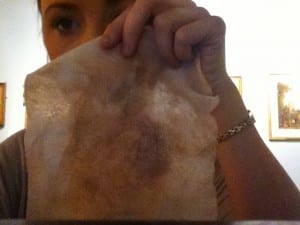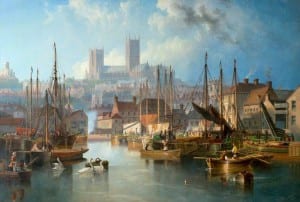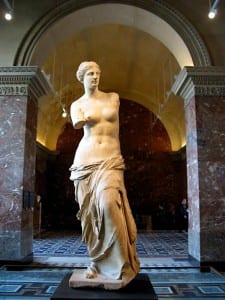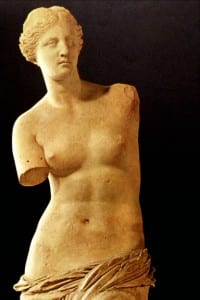This time last week my group and I had shortly finished our final performance piece. We were performing a piece of site specific drama in a gallery room in The Usher Gallery. Our piece aimed to highlight the similaritys betweeen idealised art and idealised people and how through the use of Instagram and makeup application we idealise ourselves.
The Performance
We were extremely pleased with the outcomes of our performance, and were happy to see the many faces who came to have a look. I found it challenging to continue doing something so repetitive for that length of time, especially because of the impact it had on my sore, stinging skin. Coming up to the performance date we did all discuss how painful our faces will be during and afterwards but felt there was nothing we could really do about this without changing the piece entirely. We did not want to change it because we thought it is such an aesthetically powerful piece which delivers a more intense atmosphere because of the gruelling and perhaps painful process. We did however choose to involve moisturiser as part of the routine between each section of makeup removal to look after our faces. I do not think this alters the aim because applying moisturiser is something that I inparticular do anyway before applying or removing makeup.
Another difficulty was staying in particular positions for a durational amount of time; it was uncomfortable to sit with crossed legs for 20 minutes but I feel it looked affective and as if we were possibly sitting on our beds applying makeup when we were young. We wanted the change of posture and position throughout to reflect how it is a routine but something we do at home in our bedrooms as part of an everyday process. Also, because we were sat in the positions that we were, spread around the bench, it gave the audience opportunity to see all of us. A lot of the audience members chose to walk around us so they could see each of our faces. However we were interested in how some of the public entered the gallery initially but once they saw us they chose to leave; perhaps they felt we were invading their space where they enjoy to look at the art work. Another interesting observation of mine was the choice some of the audience made to stand around the outside of the room or at the doors. One particular audience member spoke to me afterwards and said she did not want to come into the room because she felt as if she was invading our space, she found it odd that people were coming in and and looking so closely. It was interetsing to hear different people’s perspectives. In a way I would like to think they were intrigued enough to come a little closer but also it is pleasing to know they thought of the space as ours which was one of our aims. We wanted to recreate a space such as a bedroom where you would get ready for the day or a night out.
Our preperation began a few hours before the performance and admittedly I was nervous to set up the projector and see how the whole thing looked because we had a limited amount of time in the process to organise a practice set up. Thankfully there were no issues and the sound we had recorded also sounded great in the space and created the right atmosphere. A couple of last minute additions to our piece which I have not mentioned before are the use of an alarm clock, a bed sheet and the removal of our t-shirts.
The clock- As we were only supposed to be performing for two hours we needed an end point to our piece. We chose to use an alarm clock because it is something we perhaps have in our bedrooms, it is also an indictation of time and once more reiterates that applying makeup is a durational process which is part of a set time routine.
The sheet- We decided to use a bed sheet the lay over the centre of the benches we were performing on. This created a similar appearance of the makeup covered t-shirts which portrayed large versions of makeup wipes and also prevented any makeup spilling onto the surfaces. We also thought this created a bedroom affect.
The removal of t-shirts- The t-shirts we were wearing throughout the performance eventually appeared like the dirty makeup wipes which we had dropped on the floor. We decided that it would be an effective end point for us to remove them once the alarm clock sounded to show that they are something disposable. We removed our makeup and then our t-shirts also asking the questions- you wouldn’t go out without your makeup on, but would you go out without your clothes on? Is there a link between the covering of our bodies with clothing and the covering of our faces with makeup? Are they sometimes both as important as each other?
Overall I was extremely happy and relieved with the outcome. I felt that our piece delivered the exact message we had hoped for and also triggered some very important questions amongst our audience. The whole process has been very rewarding and also made me rethink how I present myself and how I want people to see me.
